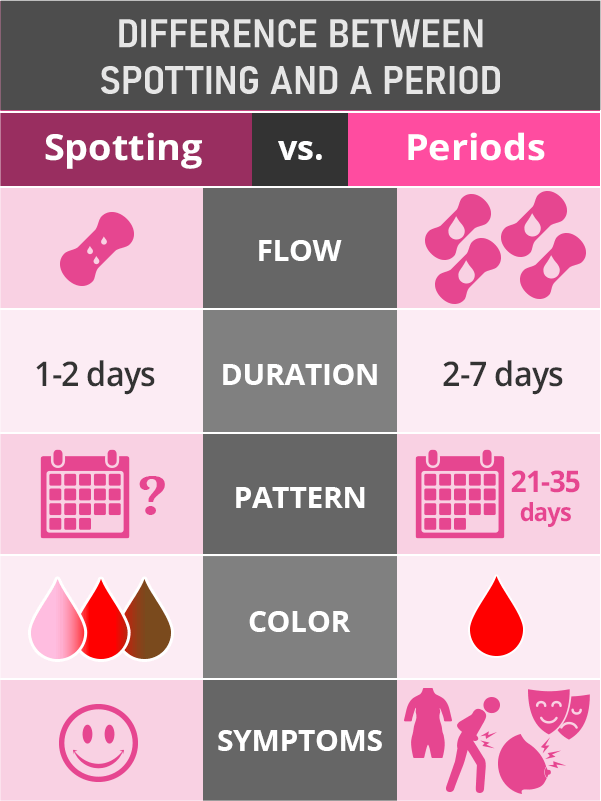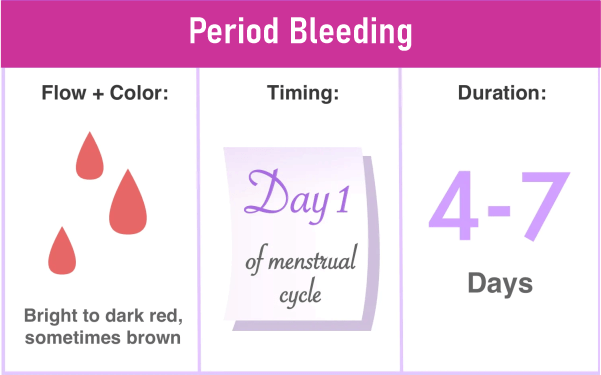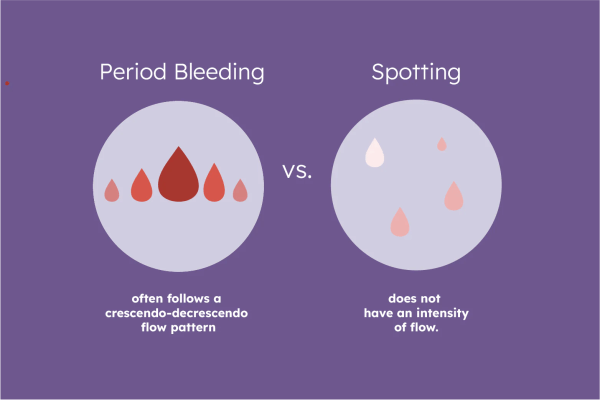Difference Between Spotting and Period
Many people find their period uncomfortable, if not worse, and eagerly await the day of the month when their bleeding stops. But when you least expected it, have you ever seen a little blood?
Spotting, or light vaginal bleeding between periods, is common and typically causes little concern. In this piece, we'll go into more detail about why it occurs and when you might need to see a doctor. Nonetheless, some cases may call for expert evaluation and potential treatment. The majority of cases are benign and don't need medical attention.

Is it Typical to Bleed Before Your Period?
While spotting is quite common, it can be unsettling for many people. Seeing a little amount of blood in your underwear can come as a bit of a shock, especially if you're used to getting your period on schedule.
But remember that most spotting situations are entirely normal, safe, and won't need any more testing or treatment before you start to get concerned. If you require medical attention, getting professional guidance as soon as possible helps ensure that you fully understand the situation and obtain the necessary treatment.
Premenstrual Spotting: Potential Causes
There are numerous potential causes of spotting. Here are a few of the most widespread:
- Hormone-based birth control: The first three months of using a hormone-based contraception, such as the pill, patch, injection, or intrauterine device, may result in some spots. This is classified as "breakthrough bleeding" by medical professionals, and it may be caused by uterine lining alterations brought on by the chemicals in your contraceptive. Condoms and other barrier methods of contraceptives are not linked to spot.
- Sexually transmitted diseases (STIs), such as chlamydia, are on the rise throughout the world. Many of these STIs spread swiftly because they frequently have no symptoms. With spots, STIs can also result in irregular vaginal discharge, feverish abdomen ache, pain when peeing, and pain during sex. You and your sexual partner should get tested right away if you have any cause to suspect that you could have an STI.
- Polyps, also known as uterine fibroids, are localised, invasive growths of the uterine lining. The uterus muscle develops benign (non-cancerous) tumours called uterine fibroids. Heavy periods, spotting, & trouble becoming pregnant are symptoms that both polyps & fibroids may cause. Large fibroids may cause discomfort, constipation, and trouble urinating.
- PCOS (polycystic ovarian syndrome) - Androgen levels in PCOS patients may be higher than normal, which may cause irregular periods & spotting.
- Reproductive system cancers, such as uterine & cervical cancer, are included in this category. These malignancies may develop in people of any age but are substantially more frequent in those who have through menopause. See your doctor if you're over 40 and have also started spotting in between periods so they can properly explore.
- Perimenopause - When you get closer to menopause, your body's hormone levels shift, which causes the lining of your uterus to thicken. It may become more challenging to predict when your period will arrive as a result. Moreover, it may cause additional symptoms, including spotting.
- Most reasons for spotting are unimportant and don't call for medical attention. Spotting may, in rare circumstances, be a sign of a more severe underlying illness that requires attention and treatment.

What are Periods?
A period is when a woman bleeds out her vagina for a couple of days throughout her menstrual cycle. For most women, this occurs around every 28 days, although it's usually for periods to occur more or less often than this, spanning from every 23 days to every 35 days.
- Your period might last from two to seven days, although it typically lasts approximately five days. The first two days of bleeding are often the most intense.
- The blood would be scarlet when your menstruation is at its thickest. It might be brown or pink on brighter days.
- While some women bleed more strongly than this, you'll lose between 20 and 90ml (or 1 and 5 tablespoons) of blood each month.
Modifications to your Menstruation
- Your monthly cycle may alter; it can get lighter or continue longer. Even if it's not a guarantee that there's an issue, this has to be looked into.
- Visit your local women's or contraception clinic, or schedule an appointment with your doctor.
- A doctor should be seen if you have bleeding between periods, after intercourse, or after menopause.
- An infection could produce anomalies in the womb's neck (the cervix), or, in rare situations, it might be cancer.
- If your period is missed and you've had sex, you could be pregnant. If you've taken a pregnancy test and the results are negative (you are not pregnant), see your doctor if you've missed three periods.
- They will investigate the problem's origin and suggest any required medical measures.
When does Menstruation End?
Up until menopause, which typically occurs when a woman is in her mid-40s to mid-50s, her periods will continue. The mean lifespan of menopause in the UK is 51.
When you experience menopause, your periods often don't end abruptly. They could begin to lessen in frequency over a few weeks or years until ceasing entirely.
PMS (premenstrual syndrome)
Before your period, changes in your body's natural hormone levels might affect your physical and mental state.
PMS (premenstrual syndrome) are term for this (premenstrual tension).
PMS may manifest in a wide variety of ways, but common symptoms include:
- having painful, swollen breasts
- mood changes
- feeling angry, low sex drive, uneven skin (loss of libido)
As your period begins, these sensations often improve and go away a few days later. PMS is not a condition experienced by all women.
What Time do Periods Begin?
While some girls start them sooner or later, periods typically start around twelve.
In most cases, a delay in the beginning periods is not the reason for alarm. By the time they are 16 to 18; most females begin having regular periods.
Sanitary items absorb or gather the blood your period releases. The primary categories of sanitary items are:
- Menstrual cups, tampons, and sanitary pads
Sanitary pads are padded strips you glue to your underwear to keep them in place. The pad has an absorbent substance on one side, soaking up the blood.
You may select a pad based on how light or heavy your period is since they come in various sizes.
Also available are washable, reusable pads.
On days that your period is extremely light, you may wear a smaller, thinner sanitary pad called a panty liner.

Difference Between Spotting and Period
- Very little vaginal bleeding and brown discharge between menstrual cycles are referred to as spotting.
- The periodic bleeding in females of reproductive age is known as menstruation.
- Several factors may contribute to spotting. If you are pregnant and suffer any form of spotting or bleeding, you should contact your doctor or another healthcare provider.
- Early pregnancy implantation bleeding is a frequent and typical cause of spotting.
Table- Showing Difference between Spotting and Period
| Basis |
Spotting |
Period |
| Amount |
light |
Changing intensity |
| Duration |
1-2 |
3-7 |
| Color |
Pink to light red |
Alternating from brown to red |
| Consistency |
Greasy, sticky |
fluid |
|



 For Videos Join Our Youtube Channel: Join Now
For Videos Join Our Youtube Channel: Join Now










